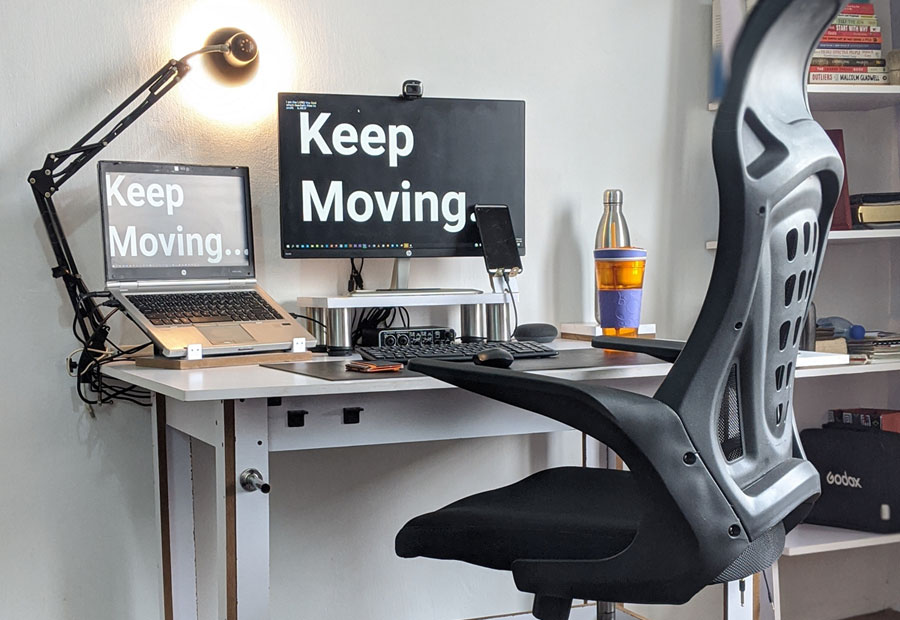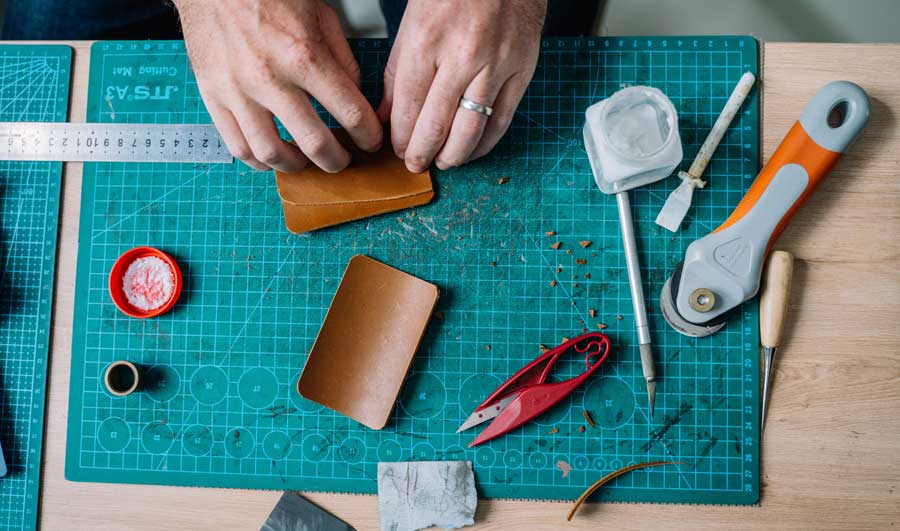Passion and work - how to combine it?

Have you ever wondered, if your working space is ergonomic or, at this point, what does it even mean? Ergonomic workspace includes comfortable chair, desk (of the right height!), footrest (if you need it), proper lighting and correct positioning of the monitor in relation to your eyes. Below we have collected for you the most important rules that should be followed when creating an ergonomic workplace.

Workplace ergonomics is all about creating space and providing conditions, which are adapted to your psychological abilities. Sitting in one place for many hours five days in a week is not only uncomfortable, but also potentially dangerous for your health. The forced sitting position is demanding enough for your body, and when you are not sitting comfortably (the desk is too high, your legs are not resting on the ground, and the monitor is too low or too high, etc.) - your back and spine might get damaged.
That's why some certain rules should be followed, when creating working space in order to prevent the occurence of occupational diseases. It's especially important for those, who work in a seated position for most of the time every day. What should be taken care of?
First of all, if you want to do your job properly and stay healthy at the same time, remember that the room in which you are working should be at least 13 square meters big. This size will allow you to put needed furniture in the room without restricting the available free space too much.
All the tools and furnitures should be strictly suited to your abilities and posture. Remember, that even if the set up of a monitor or desk is good for a friend of similar height - it doesn't mean that it will be good for you. Some people have longer arms or legs even if the growth is almost the same. It is crucial do adopt a natural position of the body, especially if you are working for around 8 hours or even longer. It will protect you from cramps, degenerations and all other kinds of unpleasant aliments.
Another thing, that is really important when setting up a workspace, is the temperature in the room. It never can be lower than 18 degrees, as it will make you feel uncomfortable. At the same time, it can't be too warm in the space and that's the reason why most of the offices have air conditioning all set up. It helps to avoid too high, uncomfortable and potentially dangerous temperatures.

Firstly, we can mention so called conceptual ergonomics. It's all about the things we've listed before: picking up furnitures, that are tailored to the needs of employees and the devices they are going to use during their work. For example, it's pointless to set a lot of drawers in the room, if you and your co-workers don't store a lot of paper documents or office supplies. At the same time, skipping the need to buy a multifunction device and finding space for it - will probably result in fitting the device in too small space or just a different room. But creating a space, which will be sufficient for work isn't the only type of ergonomy, that should be taken into consideration.
The next step is called corrective ergonomic and it is all about correcting previous assumptions in relation to the actual situation. During those activities, one should analyze and modificate the conditions that were created in the first place. In general, the first assumptions that were made might have been all wrong and the idea of corrective ergonomic is fixing those mistakes. This might include adapting the temperature in the room, but also moving some furniture in order to make more space for the workers.
Remember, that compliance with the principles of ergonomics is aimed at increasing the effectiveness of your actions by making you comfortable. When your back hurts or the monitors are placed too low or too high, you work slower, you get irritated and distracted more often. This is a win-win situation for both sides: you, as an employee, get a safe and comfortable working environment. Your employer gets an effective worker, that is satisfied with the terms of employment and willingly performs his duties.
Setting up the workspace is mainly your employer's job, but there are some things, which you can do on your own in order to make yourself comfortable. Keep in mind those important rules not only at work, but also at home:
Those rules will make you feel better at work and everyday. If you are getting really tired at work and you know for sure, that the amount of tasks at hand isn't the issue - try to figure out, what else might be wrong. This way you will be more effective and way less frustrated.
In general, long-term stress might have many unpleasant consequences for your health. Its levl can be reduced by using some special solutions, such as soundproof screens between workspaces of different workers. It's especially useful in companies with a lot of conversations are going on, for example at telephone points of sale. This way working in an open space office is less stresfull and more efficient, which is a good thing for both employer and employee.
While working, the time you spend working on the task at hand should be separated by breaks, that will help you rest and at the same time, regain your efficiency. There are many studies showing, that when a person is under a lot of stress and tired of the lack of breaks from work, they start to run slower and the risk of a mistake increases with time. When you are working on a computer, remember to move your eyes from the creen every now and then and stare into space or stand up and do a quick excercising routine. This way you will stay focused and at the same time - your stress level will be reduced.
To sum up, ergonmics of your work are all about balance. Try to work up circumstances, that will help you focus and work efficiently. At the same time, try to take a good care of your body: set the monitors on proper height, get a footrest and a desk of the right height. This way you can stay comfortable and safe during a long day at work. Even more importantly, don't forget to inform the employer of any discomfort or shortages of the workplace: it is his responsibility to take care of ergonomics.
2021-06-09 AliceRESUMEMEET.COM © 2024